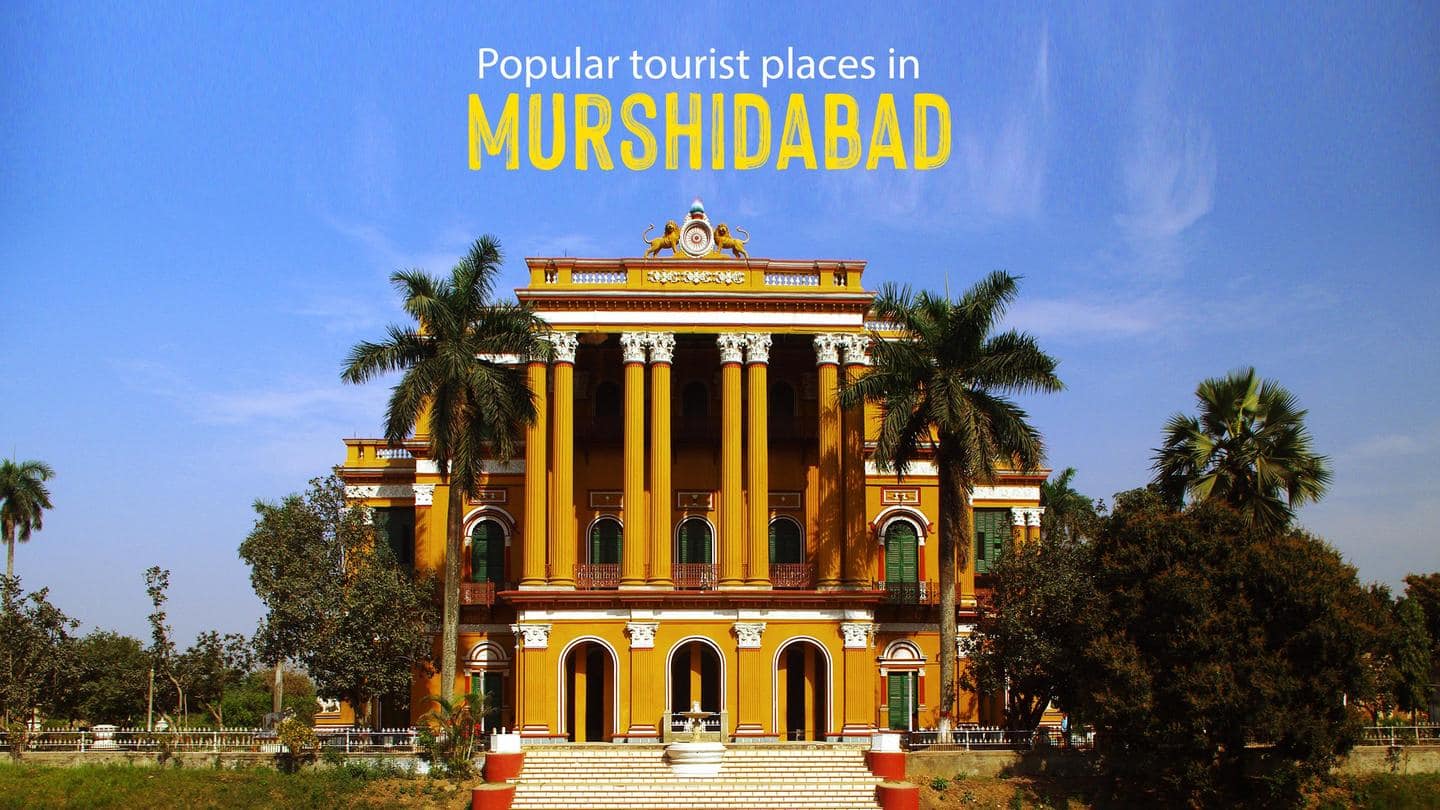
5 popular tourist places to visit in Murshidabad
What's the story
Located in West Bengal on the eastern banks of the Bhagirathi River, Murshidabad is an ancient historical city that houses many palaces, forts, religious shrines, and gardens.
The place is famous for its traditional Bengali silk and muslin weaves, jamdanis, brocades, and brass and bell metalware.
Murshidabad was Bengal's former capital city during the Mughal era.
Here are five places to visit in Murshidabad.
#1
Hazarduari Palace
One of the most popular tourist attractions in Murshidabad, Hazarduari Palace was constructed in 1837 under the reign of Nawab Nazim Humayun Jah of Bihar, Bengal, and Odisha.
Spread over an area of 41 acres, the palace reflects the European architectural style and is decorated with 1,000 ornamental gateways.
The three-story palace has 114 rooms and eight galleries that house several paintings of Nawabs.
#2
Nizamat Imambara
Nawab Siraj-ud-Daulah originally built the Nizamat Imambara in 1740 AD.
However, the mosque was destroyed by a fire following which Nawab Nazim Mansur Ali Khan reconstructed it in 1847 AD.
Located close to the Hazarduari Palace, this is one of the biggest Imambaras in West Bengal.
The mosque is open for tourists from 8:00 am to 6:30 pm on all days.
#3
Moti Jheel
Moti Jheel is one of the few tourist attractions in Murshidabad that reflects both British and Indian history.
The lake was excavated by Nawazish Muhammad Khan, Ghaseti Begum's husband.
The horseshoe-shaped lake served as the residence of popular British officials like Warren Hastings, Robert Clive, Lord Teignmouth, and many others.
Therefore, it was also called the Company Bagh.
#4
Katra Mosque
One of the oldest mosques in West Bengal, the Katra Mosque was built by Nawab Murshid Quli Khan between 1723 and 1724.
The mosque also houses the tomb of Quli Khan who was buried under the flight of stairs at the entrance of the mosque.
The double-storied mosque is maintained by the Archaeological Survey of India and can accommodate around 2,000 namaz readers.
#5
Murshidabad District Museum
The Murshidabad District Museum took 20 years to complete.
The construction was started by the Government of West Bengal in 1965 and the museum started its operations in 1985.
The land of the museum belonged to the late Rai Bahadur Surendra Narayan Singh of Jiaganj and houses his personal collections.
The museum also houses several artifacts, early potteries, sculptures, rare books, and manuscripts.